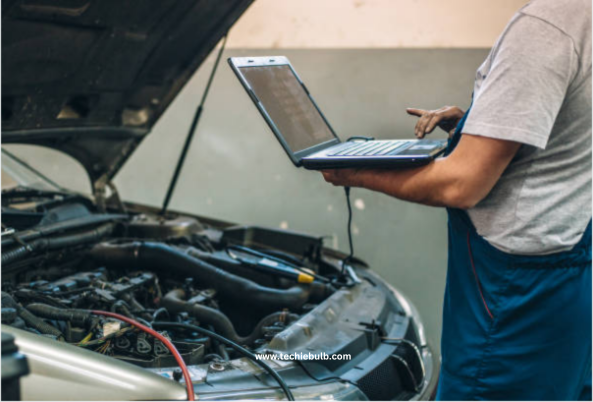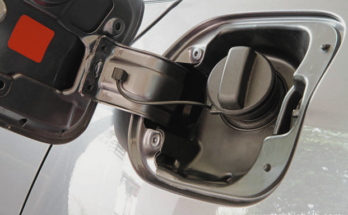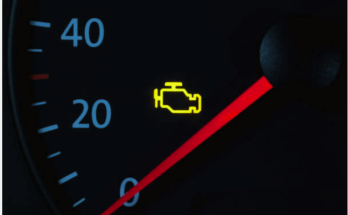Have you ever been driving peacefully, only to have your tranquility shattered by the sudden illumination of the check engine light on your car’s dashboard? It’s a scenario that’s all too familiar to many drivers, and one of the potential culprits behind this unwelcome signal is the P0171 code.
But what exactly is the P0171 code, and why does it cause your check engine light to come on? In simple terms, the P0171 code indicates that your car’s engine is running too lean – meaning there’s too much air and not enough fuel in the fuel-air mixture.
In this introduction, we’ll cover details of the P0171 Code: Meaning, Causes & Diagnosis, helping you understand its significance and potential implications for your vehicle.
Whether you’re a seasoned car enthusiast or someone who’s just starting to learn about automotive diagnostics, our aim is to provide you with the knowledge you need to decipher the mysteries of the check engine light and address any underlying issues.
The P0171 code can be triggered by a variety of factors, ranging from vacuum leaks and faulty oxygen sensors to issues with the mass airflow sensor or fuel injectors. Understanding these potential causes is essential for accurately diagnosing and resolving the problem.
Throughout this guide, we’ll explore each of these potential causes in detail, along with recommended diagnostic procedures and possible solutions. Our goal is to empower you to confidently tackle the challenges posed by the P0171 code and ensure your car remains in top condition.
So, join us as we unravel the mystery behind the P0171 code and equip you with the knowledge to keep your car running smoothly.
What is DTC Code P0171?
The DTC code P0171, commonly known as “System Too Lean (Bank 1),” is a diagnostic trouble code detected by a car’s onboard diagnostics system. This code signifies an imbalance in the air-fuel mixture entering the engine, with an excess of air or a deficiency of fuel, resulting in a lean condition.
When the engine runs lean, it may experience issues such as reduced performance, decreased fuel efficiency, and heightened emissions.
There are several reasons contribute to the occurrence of the P0171 code. These include vacuum leaks, malfunctioning oxygen sensors, a faulty mass airflow sensor, or clogged fuel injectors. Identifying the root cause of the lean condition is crucial for resolving the issue effectively.
Addressing the P0171 code promptly is essential to prevent potential damage to the engine and ensure optimal vehicle performance. Failure to rectify the underlying problem may lead to more severe issues down the line.
Therefore, it is advisable to conduct thorough diagnostic procedures to pinpoint the exact cause of the lean condition and take appropriate measures to address it.
By understanding the significance of the P0171 code and its potential causes, car owners can effectively maintain their vehicles’ performance and reliability, ultimately ensuring a smoother driving experience and minimizing environmental impact.
Possible causes of DTC Code P0171
The DTC code P0171, often termed “System Too Lean (Bank 1),” provides valuable insights into the intricate workings of a vehicle’s engine and fuel delivery system. It signifies a discrepancy in the air-fuel mixture, leaning towards an excess of air relative to fuel, which compromises engine performance and emissions.
Understanding the causes behind the P0171 code unveils the complexity of modern automotive systems:
1. Vacuum Leaks: Within the engine, a sealed vacuum system ensures proper air intake regulation. However, any breaches, such as damaged hoses or gaskets, allow unmeasured air to infiltrate, skewing the air-fuel ratio and triggering the P0171 code.
2. Faulty Oxygen Sensors: Oxygen sensors serve as critical feedback mechanisms, monitoring exhaust gas oxygen levels. If these sensors malfunction, they may relay inaccurate data to the engine control module (ECM), leading to a lean condition and the activation of the P0171 code.
3. Faulty Mass Airflow Sensor (MAF): The MAF sensor measures incoming air and communicates with the ECM to regulate fuel injection accordingly. If the MAF sensor fails or becomes contaminated, it may misinterpret airflow data, causing a lean condition and prompting the appearance of the P0171 code.
4. Fuel Delivery Issues: A smoothly functioning fuel delivery system is essential for engine performance. Issues like a clogged fuel filter, weakened fuel pump, or dirty fuel injectors can impede proper fuel flow, contributing to a lean condition and the onset of the P0171 code.
5. Intake and Exhaust System Leaks: Leaks in the intake or exhaust systems, such as damaged gaskets or cracked manifolds, disrupt the carefully balanced air-fuel mixture. Unmetered air entering the engine alters the ratio, triggering the P0171 code.
6. Fuel System Abnormalities: Anomalies in the fuel system, like low fuel pressure or restricted fuel supply, hinder adequate fuel delivery to the engine. This imbalance in the air-fuel ratio can prompt the ECM to flag the P0171 code.
Addressing the root causes of the P0171 code necessitates a thorough understanding of automotive systems. Seeking assistance from qualified automotive technicians ensures accurate diagnosis and effective resolution, safeguarding engine performance and emissions compliance.
Proactive maintenance and regular inspection of fuel and emissions systems play pivotal roles in mitigating issues like the P0171 code, fostering optimal vehicle performance and longevity.
What are the P0171 code possible symptoms?
Possible symptoms associated with the P0171 code provides valuable insights into the intricacies of a vehicle’s engine and fuel delivery system. Recognizing these symptoms early on can help car owners address underlying issues promptly, ensuring optimal engine performance and emissions compliance. Here are some knowledgeable insights into the possible symptoms of the P0171 code:
1. Check Engine Light: The illumination of the check engine light serves as an initial indicator of a potential problem within the engine or emissions system. Modern vehicles are equipped with onboard diagnostics systems that detect irregularities, such as a lean air-fuel mixture indicated by the P0171 code, and trigger the check engine light to alert the driver.
2. Decreased Engine Performance: A lean air-fuel mixture can significantly impact engine performance, resulting in decreased power output, sluggish acceleration, or hesitation during acceleration. This symptom is attributed to the engine’s inability to combust the air-fuel mixture efficiently, leading to suboptimal performance.
3. Rough Idle: An irregular or rough idle is another common symptom associated with the P0171 code. The engine may exhibit fluctuations in RPM or an unstable idle speed, indicative of a lean condition affecting idle stability.
4. Engine Stalling: In severe cases, the engine may stall or shut off unexpectedly, particularly when idling or coming to a stop. This symptom is often attributed to a lean air-fuel mixture causing instability in engine operation.
5. Increased Fuel Consumption: A lean air-fuel mixture requires more fuel to achieve proper combustion, leading to increased fuel consumption and reduced fuel efficiency. This symptom may become apparent through frequent refueling or a noticeable decrease in fuel economy.
6. Elevated Exhaust Emissions: Lean conditions can result in higher emissions of hydrocarbons (HC) and nitrogen oxides (NOx) from the vehicle’s exhaust system. Elevated emissions during emissions testing may indicate a lean air-fuel mixture and the presence of the P0171 code.
7. Hissing or Whistling Noises: Vacuum leaks, a common cause of the P0171 code, can produce hissing or whistling noises from the engine bay. These noises occur due to the escape of unmetered air through damaged hoses or gaskets, leading to a lean condition.
8. Visible Smoke from Exhaust: In extreme cases, a lean air-fuel mixture may cause the engine to run excessively lean, resulting in visible white or blue smoke emitting from the exhaust pipe. This symptom indicates severe engine running conditions and warrants immediate attention.
Understanding these symptoms associated with the P0171 code empowers car owners to identify potential issues affecting their vehicle’s performance and emissions.
Seeking assistance from a qualified automotive technician for diagnosis and repair is essential to accurately address the underlying causes of the P0171 code and ensure the proper functioning of the vehicle’s engine and emissions systems.
How do I fix the DTC Code P0171?

Addressing Diagnostic Trouble Code (DTC) P0171 involves a systematic approach to diagnose and rectify the underlying issue causing the engine to run lean.
Here’s a detailed guide on how to fix the P0171 code:
1. Diagnosis: Begin by diagnosing the problem. Use a diagnostic scanner to retrieve freeze frame data and live engine data. Perform visual inspections under the hood to check for any obvious issues such as damaged hoses or loose connections.
2. Check for Vacuum Leaks: Vacuum leaks are a common cause of the P0171 code. Inspect the vacuum system thoroughly for leaks, paying close attention to hoses, gaskets, and intake manifold components. Use a smoke machine or propane enrichment method to detect leaks. Once identified, repair or replace any damaged components to restore proper vacuum pressure.
3. Test Oxygen Sensors: Oxygen sensors play a crucial role in monitoring the air-fuel ratio. Use a scan tool or multimeter to check the functionality of the oxygen sensors. Replace any sensors that are faulty or providing inaccurate readings, as they can lead to a lean condition and trigger the P0171 code.
4. Check the MAF (Mass Airflow Sensor): The MAF sensor detects how much air passes through the engine and sends this data to the ECM. If the MAF sensor becomes contaminated with dirt or debris, it may provide inaccurate airflow readings, resulting in a lean condition. Clean or replace the MAF sensor as needed to ensure accurate airflow measurements.
5. Address Fuel Delivery Issues: Inspect the fuel delivery system components, including the fuel filter, fuel pump, and fuel injectors, for any clogs, restrictions, or malfunctions. A clogged fuel filter or weak fuel pump can restrict fuel flow to the engine, leading to a lean condition. Replace or repair any faulty components to restore proper fuel delivery.
6. Repair Intake and Exhaust Leaks: Leaks in the intake or exhaust systems can allow unmetered air to enter the engine, disrupting the air-fuel mixture and causing a lean condition. Inspect the intake manifold gaskets, exhaust manifold gaskets, and other components for leaks. Repair or replace any damaged parts to prevent air leaks.
7. Verify Fuel System Operation: Check the fuel system’s operation by performing fuel pressure tests and inspecting the fuel pressure regulator. Ensure that the fuel pressure is within the manufacturer’s specifications and that the fuel pressure regulator is functioning correctly. Address any issues affecting fuel system performance.
8. Clear Fault Codes: After completing repairs, use a diagnostic scanner to clear the fault codes stored in the ECM’s memory. This will reset the check engine light and allow you to monitor the vehicle’s performance for any recurring issues.
9. Monitor System Operation: Keep an eye on the vehicle’s performance after fixing the P0171 code. If the check engine light remains off and the vehicle operates smoothly, the issue has been successfully resolved. However, if the check engine light returns or if you notice any other symptoms, further diagnosis may be required.
By following these steps and addressing the underlying causes of the P0171 code, you can effectively fix the lean condition and restore proper engine performance.
If you’re unsure or need assistance, consult a qualified automotive technician for professional diagnosis and repair.
Diagnostic cost of DTC Code P0171
The diagnostic cost for a Code P0171 can fluctuate based on several factors. Firstly, your location plays a role; urban areas typically have higher service charges than rural ones.
Secondly, the make and model of your vehicle can influence the diagnostic process. Some vehicles may require more intricate diagnostic procedures, impacting the cost. Additionally, the rates charged by mechanics or dealerships vary widely.
Generally, diagnostic costs for this code range between $50 to $150. However, certain situations might warrant a higher fee, especially if the diagnosis requires specialized equipment or extensive labor.
It’s crucial to communicate with your mechanic or service provider to understand their pricing structure and what the diagnostic process entails.
Furthermore, it’s essential to note that the diagnostic cost is only the initial step. The actual repair expenses will depend on the underlying issue triggering the P0171 code.
It could involve anything from a simple vacuum leak to more complex problems with fuel delivery systems, oxygen sensors, or engine management components. Therefore, while estimating diagnostic costs is helpful, be prepared for potential additional expenses related to resolving the problem.
Conclusion
In conclusion, addressing the DTC code P0171, indicating a “System Too Lean (Bank 1)” error, requires thorough diagnosis and targeted repairs. By understanding the potential causes and symptoms associated with this code, car owners can take proactive steps to restore their vehicle’s performance and ensure emissions compliance.
From vacuum leaks to faulty oxygen sensors and issues with fuel delivery, the underlying causes of the P0171 code are varied and require careful attention to detail during the repair process. However, with proper diagnosis and systematic repairs, including fixing vacuum leaks, testing and replacing sensors, and addressing fuel system issues, it’s possible to rectify the lean condition and prevent further engine damage.




